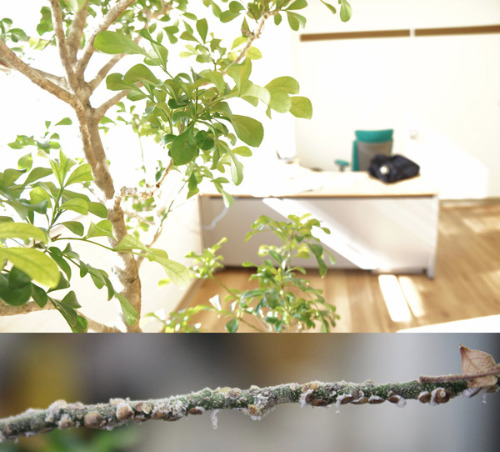RIKEN scientists have discovered how a parasitic fungus renders harmless a powerful anti-fungal compound produced by some plants1. As well as providing a fascinating glimpse into the ongoing arms race between plants and parasites, the finding could be useful for developing new therapies for people.
Parasitic fungi that infect plants are a major economic burden as they cause significant loss of crops. This provides a big incentive for scientists to understand the interactions between plants and fungi.
Many plants ward off fungi by producing small molecules that kill fungi. Rocaglates are one such family of antifungals that work by binding to a molecule called elF4A, which fungi, in common with plants and animals, need to make essential proteins.
Now, Shintaro Iwasaki of the RIKEN RNA Systems Biochemistry Laboratory and co-workers have discovered a fungal species that can avoid the lethal effects of rocaglates.
The discovery owed a lot to serendipity. "It was a fortuitous accident," Iwasaki comments. At the time, he had been in the United States researching a common house plant called Aglaia (also known as the Chinese perfume plant). Iwasaki subsequently moved to Japan to start working at RIKEN but was unable to take the plant with him due to import restrictions on foreign plants.
"So I asked a student in the lab to water the plant and keep it healthy, since it might be needed for further experiments," says Iwasaki. "But the student overwatered it."

Figure 1: The Aglaia plant in Shintaro Iwasaki's former office in the United States became infected with a fungus (bottom) despite producing rocaglate, an antifungal compound. Iwasaki's team has discovered how the fungus is able to evade the effects of rocaglate and infect Aglaia. © 2023 RNA Systems Biochemistry Laboratory
As a consequence, the plant became infected by a fungus. But that took Iwasaki by surprise since Aglaia produces rocaglates and so should have been protected from fungal infection.
Curious as to how the fungus could survive, Iwasaki and his team started to analyse it. They discovered that its gene for encoding elF4A differed in just one place from that of the usual gene for elF4A. This point mutation produced a slightly modified form of elF4A that rocaglates cannot bind to, thus protecting them from the fungus.
To demonstrate that this was the case, Iwasaki transferred the gene to a cucumber-infecting fungus and found that the fungus thrived on cucumber even when treated with a chemical derived from rocaglates.
Interestingly, it is the same strategy that rocaglate-producing plants employ to prevent themselves from being poisoned by rocaglates.
Since rocaglates are attracting interest for treating diseases such as COVID-19 and cancer, the finding may be relevant to future therapies. "Some people may have a similar mutation as the fungus and thus not benefit from treatments based on rocaglates," says Iwasaki.

Shintaro Iwasaki (far left) of the RIKEN RNA Systems Biochemistry Laboratory and his team have shown that a mutated form of eIF4A allows a fungus to evade the toxic effects of rocaglates produced by plants. © 2023 RIKEN






